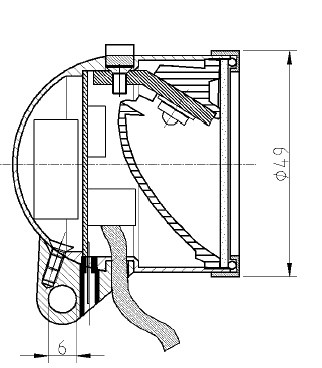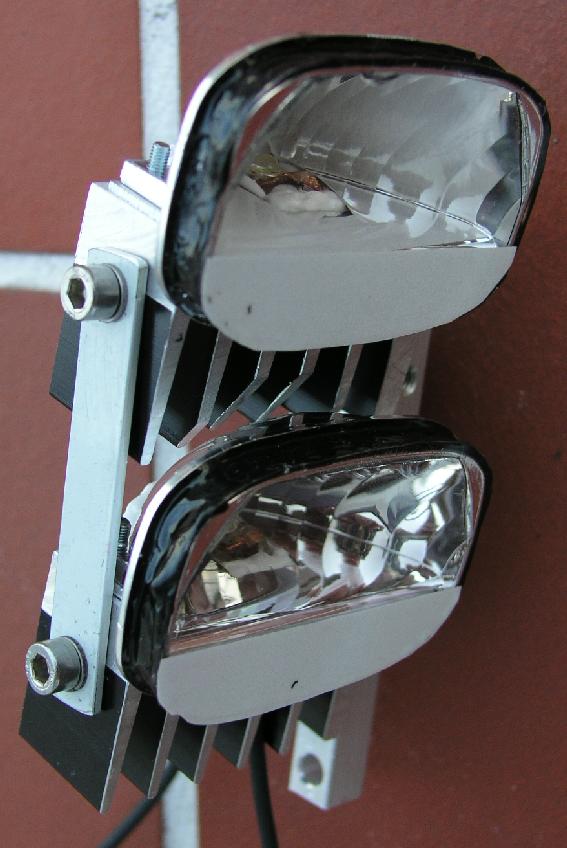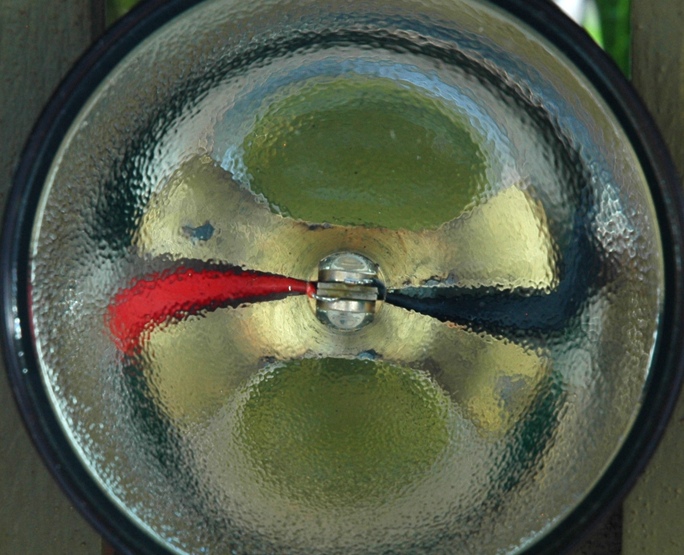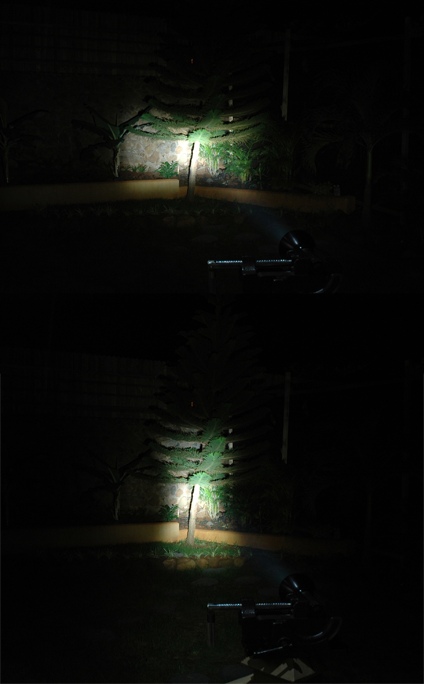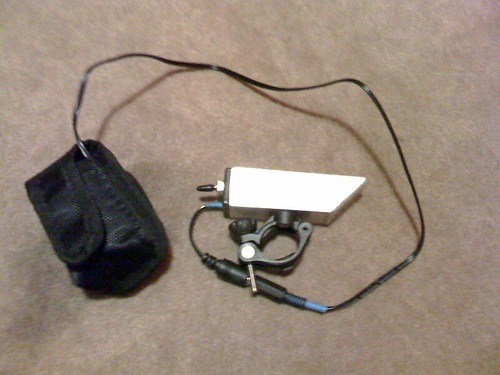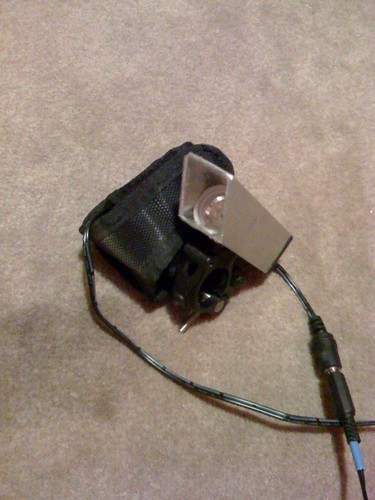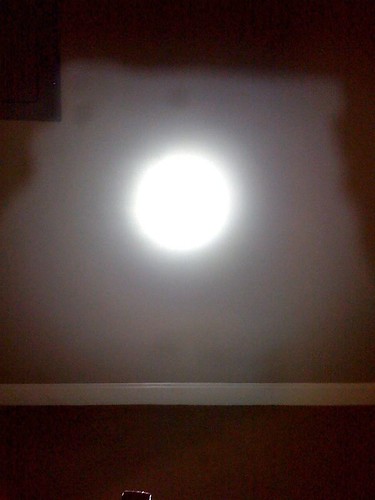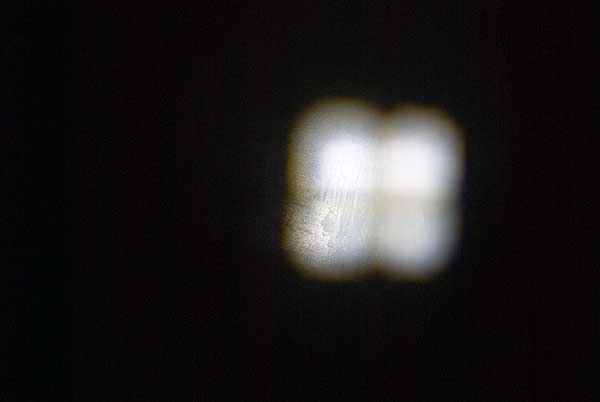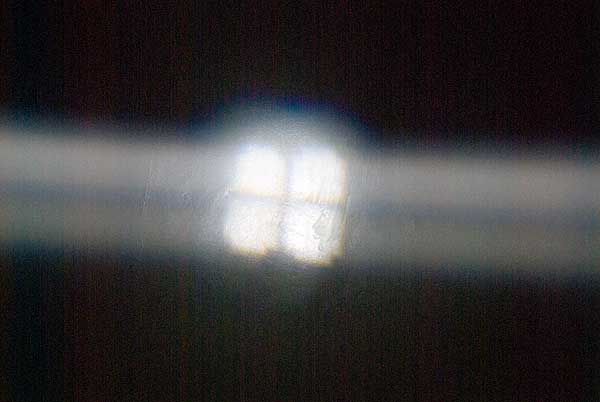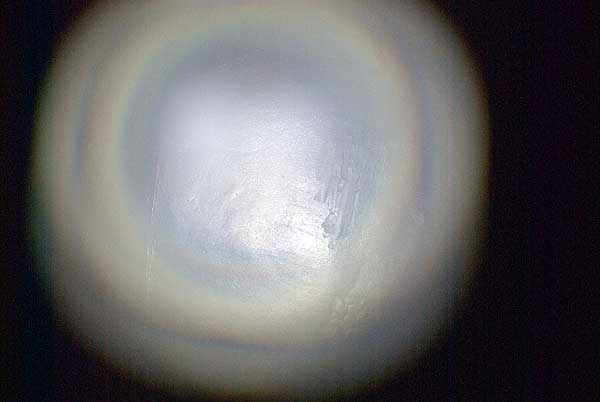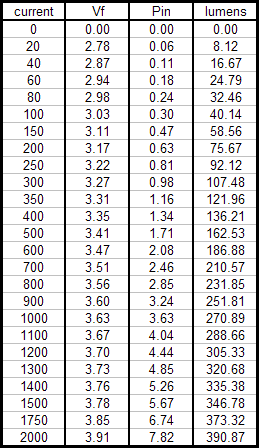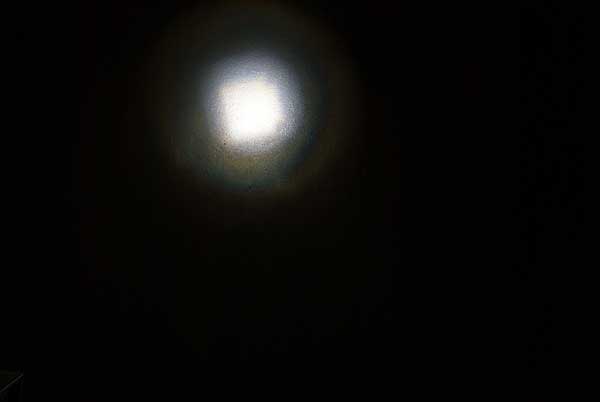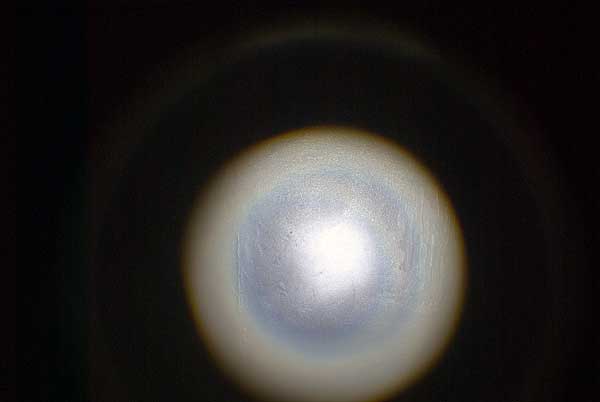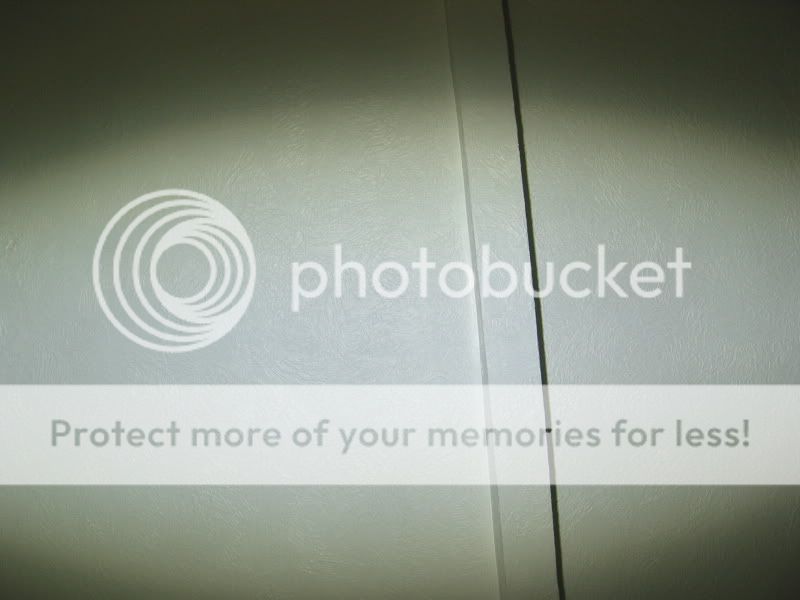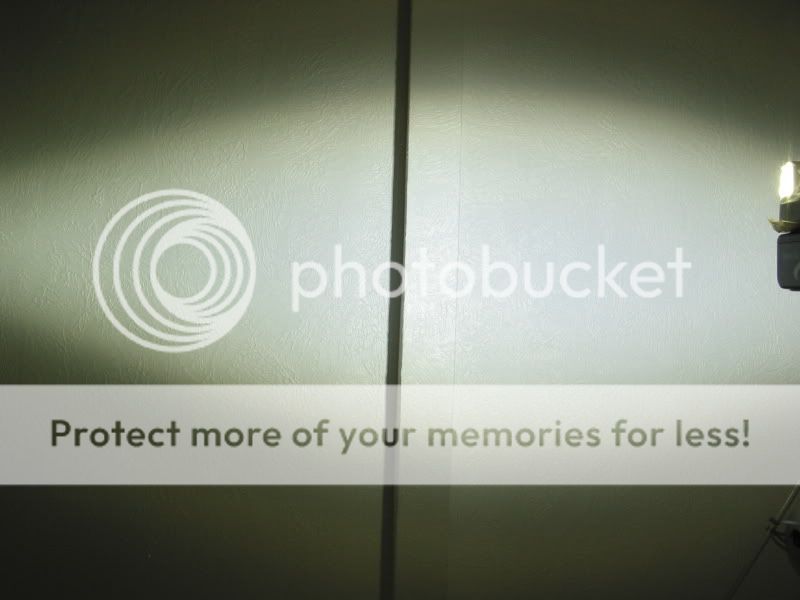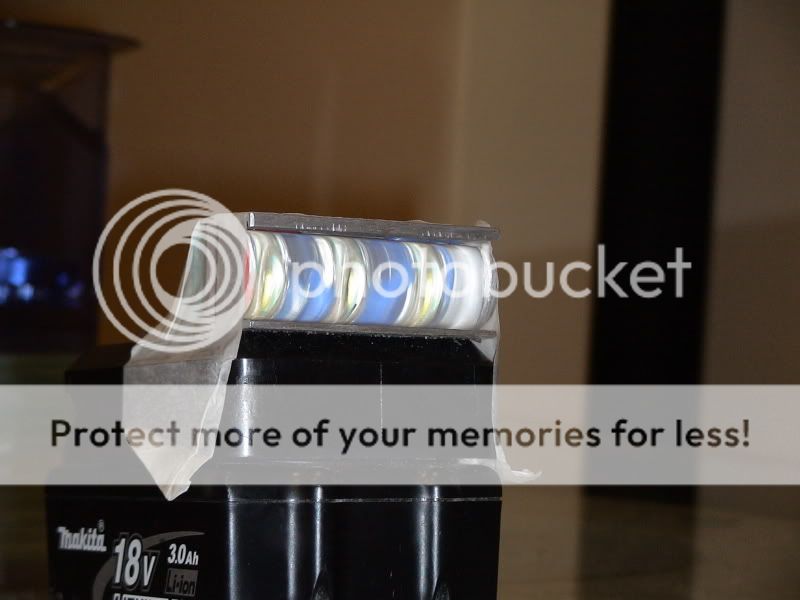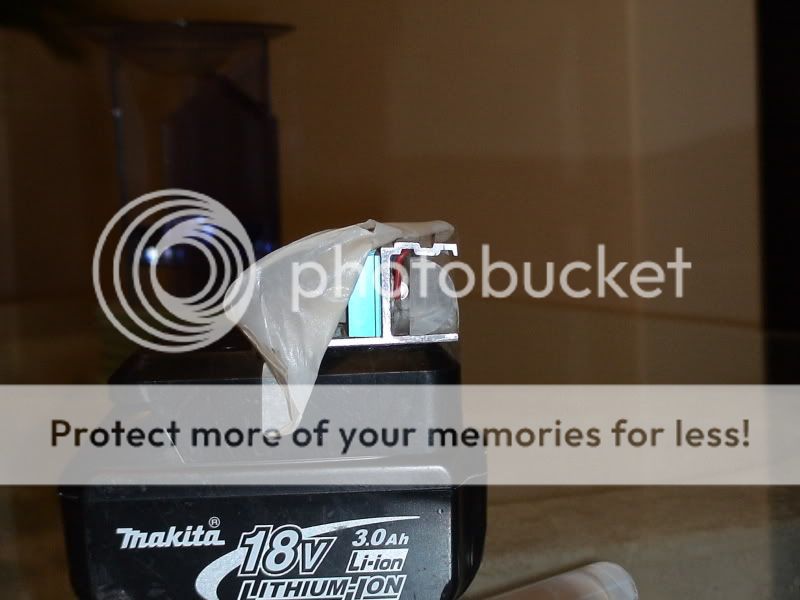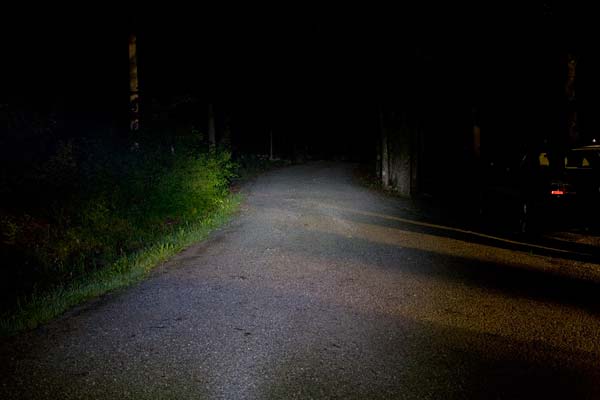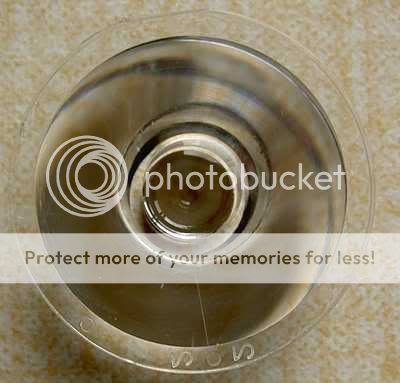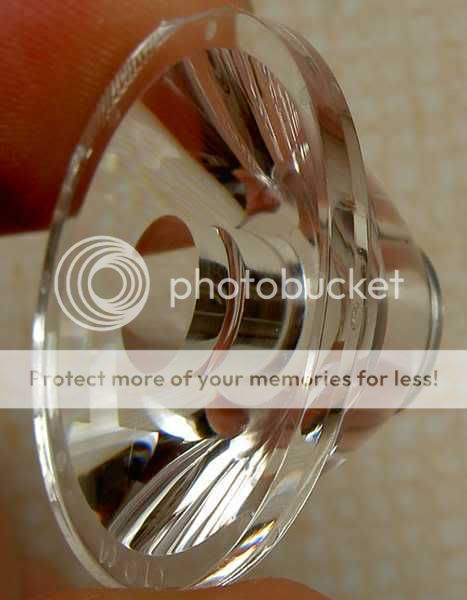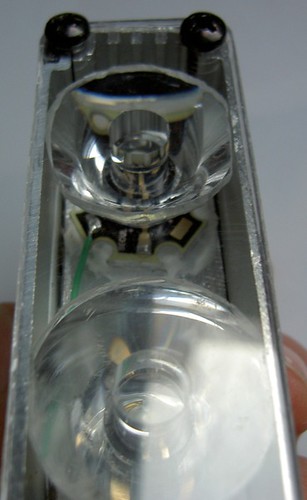Jim,
Cool - the polished hood looks like it paid off!
Since Jim posted his latest stuff, I'll post some photos of my experiments with the MC-E and this aspheric from surplusshed:
I had also ordered the 12mm diameter aspheric, but found that it was too small to work with. Maybe I'll revisit it later.
Anyway, I wired up an MC-E like this:
And hooked it up to a power supply. I measured the output across an LED, and it seemed to be delivering about 160ma to the series. Around 1/3 the amount of current that a dynamo would generate, but enough for testing purposes.
Here's what the beam pattern looked like when the emitters were pretty much in focus:
You can see that the lower 2 emitters are visibly dimmer, but not by a whole lot. Measuring the size of the image of the 4 dies, and the distance from the star to the ceiling, I calculate the angle of the hotspot to be around 8.5 degrees with virtually no spill. A pretty tight pattern for the MC-E. However, there was obviously light from the emitter that wasn't being picked up by the aspheric at the ~20mm focal length. If you look up the radiation pattern for the MC-E, at around 45 degrees off axis, its around the 60% brightness cutoff - the area under this part of the curve is pretty big, but there's still going to be a lot of incidental light that you aren't picking up.
I had a small (25mm diameter) oval diffuser that I placed in front of the aspheric to experiment with a beam pattern that would be good for road use. Here's the result:
I think the photo overemphasizes the image of the central emitter spot. When I looked at the pattern, it seemed like there was more diffusion than the image shows - goes to show that the human eye and digital camera sensors don't quite operate the same. In any case, it diffused the light across a pretty large strip of the ceiling, with very little light off the axis of diffusion.
I also defocused the lens slightly by bringing it about 4mm closer to the emitter, which would pick up more of the light and spread it out more as well. Here's the result:
My camera didn't really pick up the entire beam pattern, but I think you can see that it is a larger, rounded off square. The gradient from top to bottom is even harder to notice in this photo than the first one. However, you still get a very clean cutoff with almost no spill.
The brightness gradient between the individual dies and the 2 parallel dies just isn't as high as I would have expected. Part of this is probably due to the relatively low current levels ( 160ma vs the 500ma-700ma you often see out of the dynamo), and the fact that the emitters are more efficient at lower currents than higher currents. Looking at jtr1962's
excellent test of the R2, here's the table of outputs for the R2 emitters:
I'm using one of Brum's M-bin MCE's, which comes out to be roughly the same efficiency as the R1 XRE. Close enough to what jtr1962 tested. The series dies are seeing ~160ma apeice for ~60 lumens, while the parallel dies are seeing 80ma for ~32 lumens each. That is about a 30 lumens difference between an upper and lower die.
If we drive the led with a 500ma current, then we'd see 162 lumens for each of the the upper leds, and 92 lumens for each of the lower leds. The efficiency of the led's at lower drive levels actually works against us. Still, we'd end up with a 70 lumen difference between each of the the upper and lower emitters. A 70 lumen difference would be more noticeable I think.
For folks interested in results with the R2, here's the basic emitter projection:
And here is a slightly defocused beam pattern:
The beam pattern is tighter, and less obviously square. Little to no spill, and on the back side of the lens, it was pretty obvious that the aspheric was picking up almost all of the light coming off the emitter. Very little incident light on the other side of the lens. If you want to throw light down the road efficiently, an R2 and this lens would do the trick.
Note that all the photos were taken from the same distance to the ceiling, so you can compare the angles of the hotspots. The defocused R2 is probably around 9-10 degree spread, no spill. The power supply seems to be basically delivering 1 watt of power, adjusting for voltage levels, so the power to the R2 is comparable to the total power for the MCE. All these photos were taken at the same exposure ( F8, 1/20s) and ISO.
Anyways, that's what I've done so far. I don't have anything testable on the road yet, and probably won't for a while since the aspheric lens would need to be mounted properly. But looking around at the hardware store, I think it wouldn't be too hard to rig up a test setup with various pipe fittings, before doing a final housing.


